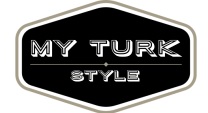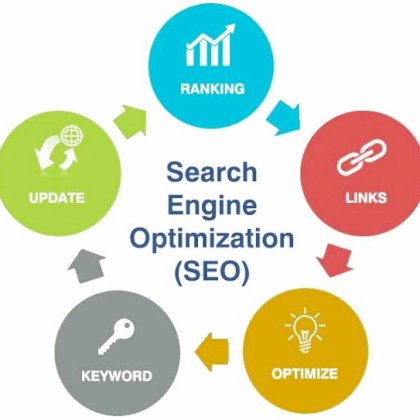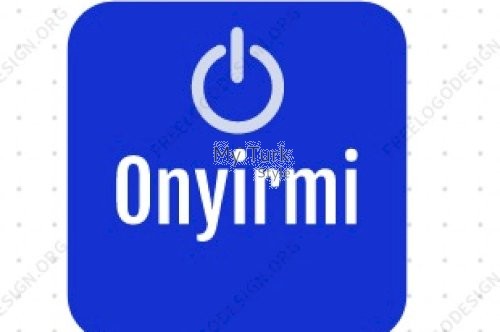Can You Use Shopify Without Dropshipping?

can you use shopify without dropshipping Shopify is a popular e-commerce platform that is commonly associated with dropshipping, a business model where online retailers don't keep the products they sell in stock. However, many people wonder whether it is possible to use Shopify without dropshipping. The answer is yes. While dropshipping has become synonymous with Shopify, the platform also supports other business models. Shopify can be used to sell physical products that you already have in stock, offer services such as consultations or online courses, or even create a subscription-based business. In other words, Shopify is a versatile platform that can be tailored to different business needs, making it suitable for a wide range of e-commerce ventures.
When it comes to creating an online store, Shopify is often the go-to platform for many entrepreneurs. It offers a user-friendly interface, a wide range of customizable themes, and various features to help businesses grow. However, there seems to be a misconception that Shopify is only meant for dropshipping businesses. In this article, we will explore alternative business models that can be successfully implemented on Shopify.
Contrary to popular belief, Shopify is not limited to just dropshipping. While dropshipping has gained popularity due to its ease of entry and low initial investment, there are other profitable business models that can be pursued on this platform. Let's take a closer look at some of these alternatives:
1. E-commerce Store: Setting up an e-commerce store on Shopify allows you to sell your own products directly to customers. This gives you complete control over your inventory, pricing, and branding. Whether you have unique handmade items, digital products, or a collection of merchandise, Shopify provides a seamless platform to showcase and sell your goods.
2. Service-based Business: If you offer services rather than physical products, Shopify can still be a valuable tool for your business. Whether you are a web designer, a photographer, or a consultant, you can leverage Shopify's features to create an attractive website, showcase your portfolio, and even accept appointments or bookings.
3. Subscription Box: Another lucrative business model that can be explored on Shopify is the subscription box service. By curating and delivering niche products on a regular basis, you can create a loyal customer base and generate recurring revenue. Shopify's app store offers various subscription box plugins, making it easy to set up and manage your subscription-based business.
4. Digital Downloads: If you have digital products such as e-books, music, or software, Shopify provides a secure platform to sell and deliver these products to your customers. With built-in digital product management features, you can ensure a smooth and hassle-free experience for your buyers.
Conclusion: In conclusion, Shopify is not limited to just the dropshipping business model. It is a versatile platform that can cater to various business models and niches. Whether you prefer to sell physical products, offer services, run a subscription box, or sell digital downloads, Shopify provides the necessary tools and flexibility to support your business. So, if you've been hesitant about using Shopify without dropshipping, it's time to explore the possibilities and unleash your entrepreneurial potential.
Selling Physical Products on Shopify Without Dropshipping: Is it Possible?
When it comes to starting an online store, many entrepreneurs turn to dropshipping as a popular choice. Dropshipping allows you to sell products without the hassle of inventory management and shipping logistics. However, is it possible to sell physical products on Shopify without relying on dropshipping? In this article, we will explore this topic and provide valuable insights for those looking to take a different approach.
While dropshipping may seem like the easiest way to get started in the e-commerce world, it does come with its own set of challenges. From finding reliable suppliers to dealing with shipping delays, dropshipping can sometimes be a headache. Additionally, profit margins can be thin due to the competition in the dropshipping market.
So, is there an alternative to dropshipping on Shopify? The answer is yes. With careful planning and execution, it is possible to sell physical products on Shopify without relying on dropshipping. Here's how you can do it:
- Identify Your Niche: Before you start selling physical products on Shopify, it's essential to identify a niche market that you can cater to. By targeting a specific audience, you can differentiate yourself from the competition and establish a unique selling proposition.
- Source Quality Products: Unlike dropshipping, where you depend on suppliers to fulfill orders, selling physical products on Shopify requires you to have inventory. Look for reliable suppliers or manufacturers who can provide you with high-quality products.
- Create Compelling Product Descriptions: When selling physical products, your product descriptions play a crucial role in attracting customers. Use persuasive language, highlight the key features, and include relevant keywords to optimize your product pages for search engines.
- Optimize Your Shopify Store: To increase your chances of success, ensure that your Shopify store is SEO-friendly. Optimize your meta tags, URLs, and headers with relevant keywords. Additionally, optimize your website's loading speed and create a user-friendly navigation system.
- Implement Effective Marketing Strategies: Without dropshipping, you will need to drive traffic to your Shopify store through effective marketing strategies. Utilize social media platforms, influencer partnerships, and content marketing to reach your target audience and generate sales.
By following these steps, you can sell physical products on Shopify without relying on dropshipping. Keep in mind that building a successful e-commerce business takes time and effort. However, by focusing on providing value to your customers and implementing effective marketing techniques, you can achieve your goals.
In conclusion, while dropshipping may be a popular choice for starting an online store, it is not the only option. Selling physical products on Shopify without dropshipping is indeed possible. With careful planning, sourcing quality products, optimizing your store, and implementing effective marketing strategies, you can create a successful e-commerce business that stands out from the competition.
Diversifying Your Shopify Store: Beyond Dropshipping
In the fiercely competitive world of e-commerce, it’s essential for Shopify store owners to explore new avenues for growth and profitability. While dropshipping is a popular business model, it's important to expand your product offerings and diversify your revenue streams to stay ahead of the competition.
One effective way to diversify your Shopify store is by incorporating various strategies that go beyond traditional dropshipping. By expanding your product range and exploring alternative fulfillment methods, you can tap into new markets and attract a wider customer base.
A key strategy to diversify your Shopify store is by sourcing and selling unique, high-quality products that align with your target audience's interests and needs. Conduct market research to identify trending products and niche markets that have high demand but low competition. By offering exclusive and hard-to-find items, you can set your store apart from the competition and attract passionate buyers.
Another approach to diversifying your Shopify store is by offering private label products. Private labeling allows you to create and sell your own branded products without the need for manufacturing or inventory management. This strategy gives you more control over product quality, pricing, and branding, enabling you to build a loyal customer base and increase profit margins.
Furthermore, expanding your fulfillment options can help diversify your revenue streams. In addition to dropshipping, consider utilizing print-on-demand services or partnering with local suppliers to offer fast and reliable shipping. By providing multiple fulfillment options, you can cater to different customer preferences and improve overall customer satisfaction.
Additionally, don't underestimate the power of content marketing in diversifying your Shopify store. Create captivating and informative content that educates and engages your target audience. This can be in the form of blog posts, product guides, or tutorials that showcase the value and benefits of your products.
| Benefits of Diversifying Your Shopify Store |
|---|
| 1. Increased Profitability: By expanding your product range and revenue streams, you can maximize your potential earnings and drive sustainable growth for your store. |
| 2. Reduced Dependency: Relying solely on dropshipping can be risky, as market trends and supplier availability can fluctuate. Diversification allows you to mitigate these risks and build a more resilient business. |
| 3. Competitive Advantage: By offering unique products and multiple fulfillment options, you can differentiate your store from competitors and attract loyal customers. |
| 4. Targeted Expansion: Diversification gives you the opportunity to tap into new markets, target different customer segments, and expand your reach beyond your current audience. |
In conclusion, diversifying your Shopify store goes beyond dropshipping and requires exploring new strategies such as sourcing unique products, private labeling, expanding fulfillment options, and leveraging content marketing. By implementing these strategies and staying on top of market trends, you can position your store for long-term success in the ever-evolving e-commerce landscape.
Creating a Unique Brand on Shopify: A Guide for Non-Dropshipping Businesses
When it comes to building a successful online business, creating a unique brand identity is crucial. This is especially true for non-dropshipping businesses on the popular e-commerce platform, Shopify. In this guide, we will explore the key steps to help you establish a distinctive brand presence that sets you apart from the competition.
1. Define Your Brand Identity
The first step towards creating a unique brand on Shopify is to define your brand identity. Start by clearly defining your brand's mission, values, and target audience. What unique qualities or benefits do you offer? By identifying what sets you apart, you can build a brand that resonates with your audience and keeps them coming back for more.
2. Choose a Memorable Brand Name
A catchy and memorable brand name is essential for standing out in the crowded online marketplace. Your brand name should align with your brand vision and be easy to remember. Conduct thorough research to ensure that the name is not already taken or trademarked. Once you have found the perfect name, register it as a domain for your online store.
3. Craft a Compelling Brand Story
A compelling brand story connects with your audience on an emotional level and helps build trust and loyalty. Share your journey, values, and what inspired you to start your business. Highlight the unique aspects of your products or services that solve your customers' problems or fulfill their desires. By telling your story effectively, you can create a strong bond with your audience.
4. Consistent Branding Across All Platforms
To create a cohesive brand experience, ensure consistent branding across all your online platforms. Use your chosen brand colors, fonts, and logos consistently on your website, social media profiles, and other marketing materials. Consistency reinforces your brand's image and helps customers recognize and remember you, leading to increased brand loyalty.
5. Unique Product Descriptions and Imagery
When selling products on Shopify, it's essential to have unique product descriptions and eye-catching imagery. Rather than using generic product descriptions provided by manufacturers, create descriptions that highlight the features, benefits, and unique qualities of your products. Use high-quality images that showcase your products from different angles and give customers a clear idea of what they can expect.
6. Engage with Your Customers
Building a unique brand involves establishing a connection with your customers. Engage with them through social media, email marketing, and live chat support. Respond to their queries, address their concerns, and listen to their feedback. By building this relationship, you can create a loyal customer base that believes in your brand and recommends it to others.
7. Provide Exceptional Customer Service
Exceptional customer service is a key component of creating a unique brand on Shopify. Respond promptly to customer inquiries and provide helpful and personalized solutions to their problems. Remember, happy customers become repeat customers and valuable brand ambassadors.
Conclusion
By following these steps and paying attention to SEO rules, you can create a unique brand on Shopify that stands out from the competition. Define your brand identity, choose a memorable name, tell your compelling brand story, and engage with your customers. With time and consistency, your non-dropshipping business can establish a strong brand presence that attracts and retains loyal customers.
Unlocking Shopify's Potential: Non-Dropshipping Strategies for Success
In recent years, Shopify has emerged as a leading ecommerce platform, empowering entrepreneurs to build and grow online businesses. While dropshipping has been a popular business model on Shopify, it is not the only path to success. In this article, we will explore non-dropshipping strategies that can unlock the full potential of your Shopify store.
1. Build a Brand Identity
Creating a strong brand identity is crucial for long-term success. It helps you differentiate yourself from the competition and build customer loyalty. Start by defining your target audience and developing a brand personality that resonates with them. Use Shopify's built-in customization options to create a visually appealing and consistent brand image across your website.
2. Curate Unique Products
Instead of relying solely on dropshipping, consider sourcing or creating unique products that are exclusive to your store. This allows you to offer something different from what can be found on other Shopify stores. Conduct market research to identify trending or untapped product categories that align with your target audience's interests and needs. Look for ways to add value through packaging, customization, or bundling.
3. Optimize Your Store for Search Engines
If you want your Shopify store to rank well on search engines and attract organic traffic, you need to optimize it for SEO. Start by conducting keyword research to identify relevant keywords that your target audience is searching for. Incorporate these keywords organically into your product descriptions, meta tags, and headings. Also, optimize your store's loading speed, mobile responsiveness, and URL structure.
4. Leverage Influencer Marketing
Influencer marketing can be a powerful tool to reach a wider audience and build trust with potential customers. Identify influencers in your niche who have a substantial following and engage with your target audience. Collaborate with them to promote your products or feature your store on their social media channels, blogs, or YouTube videos. This can generate brand awareness, drive traffic, and increase conversions.
5. Offer Exceptional Customer Service
Providing exceptional customer service is crucial for both attracting new customers and retaining existing ones. Respond promptly to customer inquiries and issues, and go the extra mile to exceed their expectations. Personalize the shopping experience through features like live chat, personalized recommendations, and targeted email campaigns. Demonstrate that you genuinely care about your customers and their satisfaction.
| Non-Dropshipping Strategies | Benefits |
|---|---|
| Building a brand identity | Establishes a loyal customer base |
| Curating unique products | Sets you apart from competitors |
| Optimizing for search engines | Improves organic visibility and traffic |
| Leveraging influencer marketing | Expands reach and builds trust |
| Offering exceptional customer service | Boosts customer satisfaction and loyalty |
Unlock the true potential of your Shopify store by implementing these non-dropshipping strategies. By building a strong brand, curating unique products, optimizing for search engines, leveraging influencer marketing, and offering exceptional customer service, you can set yourself up for long-term success. Remember, success on Shopify requires dedication, creativity, and continuous improvement.
Frequently Asked Questions
Yes, you can use Shopify without dropshipping. Shopify is a versatile e-commerce platform that allows various business models, including dropshipping. However, you can also use Shopify to sell products that you own and manage the inventory yourself.
No, dropshipping is not the only way to use Shopify. While dropshipping is a popular business model on the platform, you can also use Shopify to sell products that you own and manage the inventory yourself, or even offer services rather than physical products.
Yes, you can sell your own products on Shopify. Whether you have physical products or digital goods, you can list them on your Shopify store and manage the inventory and fulfillment processes yourself.
No, having inventory is not a requirement to use Shopify. While dropshipping allows you to fulfill orders without holding inventory, you can also use other fulfillment methods or sell digital products or services.
Yes, Shopify offers integrations with various inventory management systems. You can connect your Shopify store with your existing inventory system to keep track of stock levels, manage purchases, and streamline order fulfillment.
Using Shopify without dropshipping allows you to have full control over your products, inventory, and fulfillment processes. You can build your brand, create a unique customer experience, and have more flexibility in pricing and promotions.
Yes, you can switch from dropshipping to owning your own products on Shopify. If you decide to change your business model, you can start sourcing or creating your own products and transition your store accordingly.
No, you do not need extensive technical skills to use Shopify without dropshipping. The platform is designed to be user-friendly and easily manageable for entrepreneurs with varying levels of technical expertise.
Absolutely! Shopify offers a wide range of features and tools that are beneficial for all types of e-commerce businesses, whether you dropship or sell your own products. You can leverage marketing tools, set up payment gateways, design your store, and much more.
No, Shopify's subscription plans are not specific to dropshipping or owning your own products. The plans are suitable for all types of businesses and offer different features and benefits based on your needs.
 English
English
 Turkish
Turkish 























